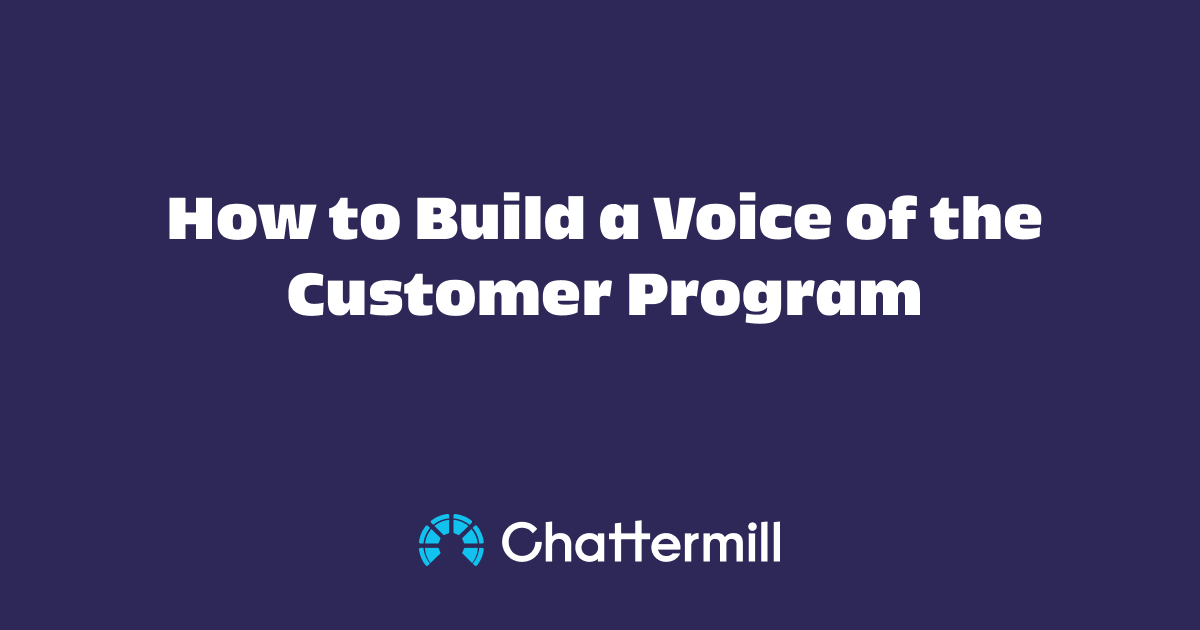Customers are the lifeblood of any business and the foundation of profitability. To deliver better customer experiences, leaders need a structured way to listen to their customers, uncover needs, and act with confidence.
A Voice of the Customer (VoC) program provides exactly that. It captures customer feedback across touchpoints, analyzes it, and turns insights into measurable business improvements.
What is a Voice of the Customer Program & Why Your Competitors Are Using Them
A Voice of the Customer program is a structured approach to collecting feedback about your business, products, and services. This feedback comes from sources such as surveys, support tickets, social media, and reviews. By analyzing it, CX leaders can close the gap between expectations and experiences.
Major companies have to use a Voice of the Customer program to stay up to their customers' needs and preferences, which helps them remain competitive in the market. By leveraging VoC insights, they can improve products and services, enhance customer satisfaction, and foster loyalty. Without a VoC program, companies risk being out of touch with their customers, leading to missed opportunities, decreased customer satisfaction, and potential loss of market share to competitors who better understand and meet their customers' needs.
Why VoC Programs Are Essential
According to Forrester’s 2024 US Customer Experience Index, brands that lead in customer experience outperform laggards by significant margins in loyalty, retention, and revenue growth. This underscores why programs like Unified Customer Intelligence and Voice of the Customer initiatives are not just “nice-to-haves,” but essential drivers of business success.
- Improve product and service quality
- Enhance customer satisfaction
- Strengthen loyalty and retention
- Identify emerging risks before they escalate
In short, VoC programs give you the evidence to act decisively and keep customers at the center of your growth strategy.
The 2 biggest benefits of a VoC program
1 Winning customer loyalty in the long run
Incorporating a Voice of the Customer program in your organization can reveal customer needs and preferences, helping you develop a closer connection with your customers. This leads to stronger customer relationships and the early identification and resolution of potential issues. As a result, customer loyalty and engagement with your brand increase, boosting customer retention. Additionally, a VoC program provides a customer-centric view of your business, enriching metrics like churn and revenue for a more holistic picture
2 Unifying your organization’s team
Within your organization, a VoC program can improve teamwork and collaboration, highlighting strengths to build upon. It informs and strengthens product development teams and assists customer success teams in creating a better customer journey overall. Ultimately, a VoC program helps develop a more customer-centric approach and vision, ensuring your business stays aligned with customer needs and expectations.
6 Steps to Building a Successful Voice of the Customer Program
Here are six steps to build a successful VoC program:
1. Define Business Objectives and Questions

Start by defining the business objectives and questions that need to be answered by the VoC program. Senior leaders and stakeholders should identify the key areas where customer insights can drive the most impact.
2. Connect Feedback Across Customer Data Channels
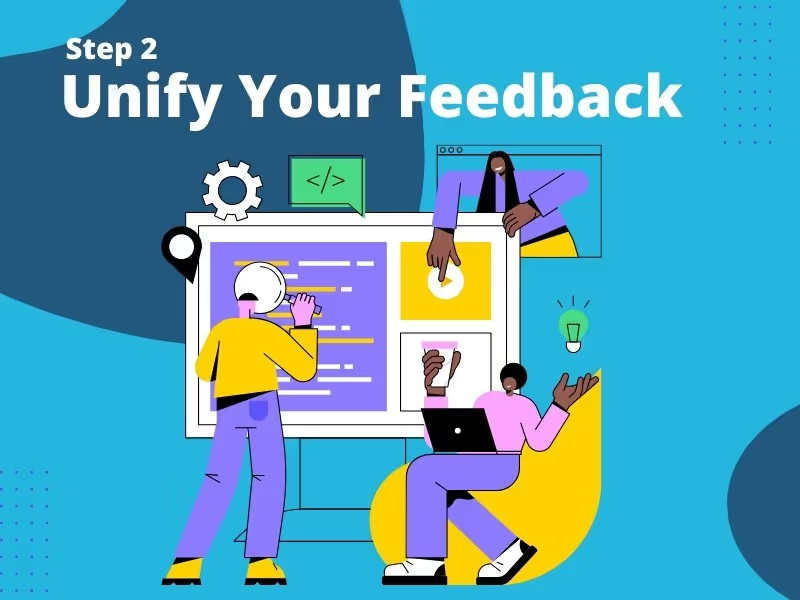
Gather feedback from multiple customer data channels. Utilize Voice of Customer Tools or Software or market research and survey providers to ensure high-quality data collection. This includes direct feedback from surveys and indirect feedback from social media and third-party sites. Below are some of the VoC metrics you can begin pulling feedback data from.
Voice of the Customer Analytics
Analyze and interpret customer data to translate findings into actionable insights. Read our Voice of the Customer Analysis for a more in depth breakdown on how to approach this.
- Identify common themes and prioritize them.
- Document findings in a clear and accessible format.
- Plan implementation based on actionable insights.
- Involve your team by sharing filtered results and action plans.
3. Collaborate Across Teams

Engage cross-department teams such as customer service, sales, and front-of-house. These teams, having the most interactions with customers, can provide valuable insights into their needs and pain points. Promote collaboration between teams during the planning phase to align on goals and strategies for the VoC program. Share VoC feedback and insights across the business. Use dashboards and reports to present specific customer insights to relevant stakeholders and team members, ensuring that everyone is informed and engaged.
4. Measure VoC Metrics
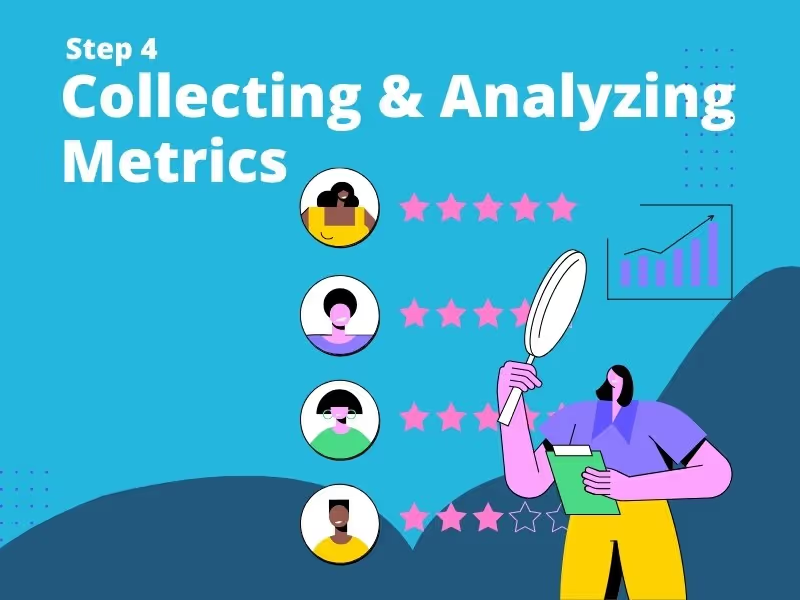
In order to evaluate the success of your VOC program, you have to measure its success. You'll have many metrics to measure it against and they will vary from one team to another. What success looks like for a product development team will be different from a sales, marketing or customer support team. It’s important to define benchmarks of what success looks like for the relevant teams before measuring and analysing it.
Different VoC Metrics
Real-time direct customer feedback
Businesses transparently ask for customer insights. This can be via customer surveys, online reviews, forums, focus groups or complaint forms for example.
Indirect, multi-platform customer feedback
Social media is a good example of this, when people are talking about the business rather than directly to it. Indirect feedback can be tracked on third party websites and social channels.
Inferred feedback
Customer data is interpreted to gauge a customer’s likely feelings towards a brand/ product/ service. This could be how much time they spend on the website, whether they repeat purchase or their contact with customer support (or the contact center) for example.
5. Turn Insights Into Action
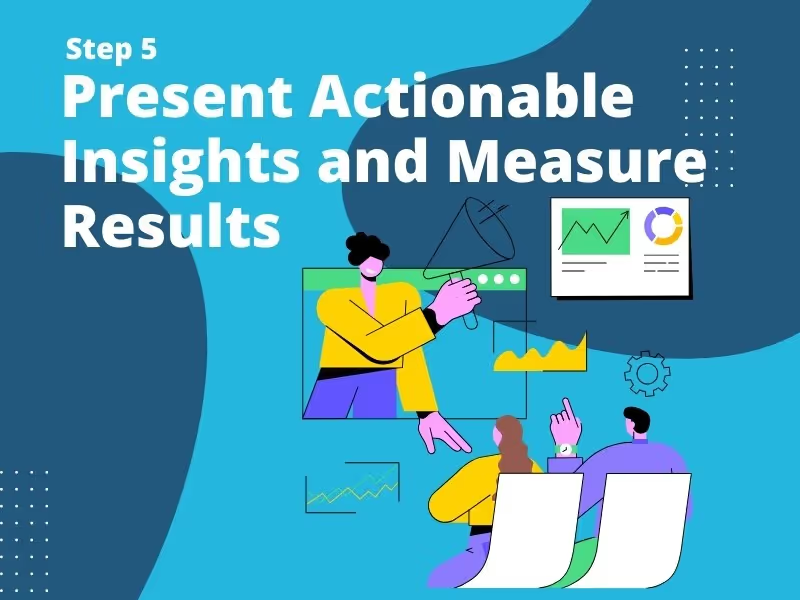
Present actionable insights derived from the VoC program. Address customer feedback and implement changes that are measurable. Align VoC insights with actions and improvements to demonstrate clear ROI and positive business impact. Having a Customer Feedback Analytics platform at your side can help in all of the above areas.
To evaluate the success of your VoC program, measure its impact using various metrics.
These metrics will differ across teams, so it’s important to define benchmarks for success relevant to each team before analyzing the results. Here are 4 metrics you could use to measure the impact of your voice of the customer program.
- Net Promoter Score (NPS) - Measures likelihood to recommend your business.
- Customer Effort Score (CES) - Assesses the effort required to complete an action.
- Customer Satisfaction Score (CSAT) - Evaluates overall customer satisfaction.
- Customer Loyalty Index (CLI) - Averages scores across questions to gauge loyalty.
6. Rinse and Repeat
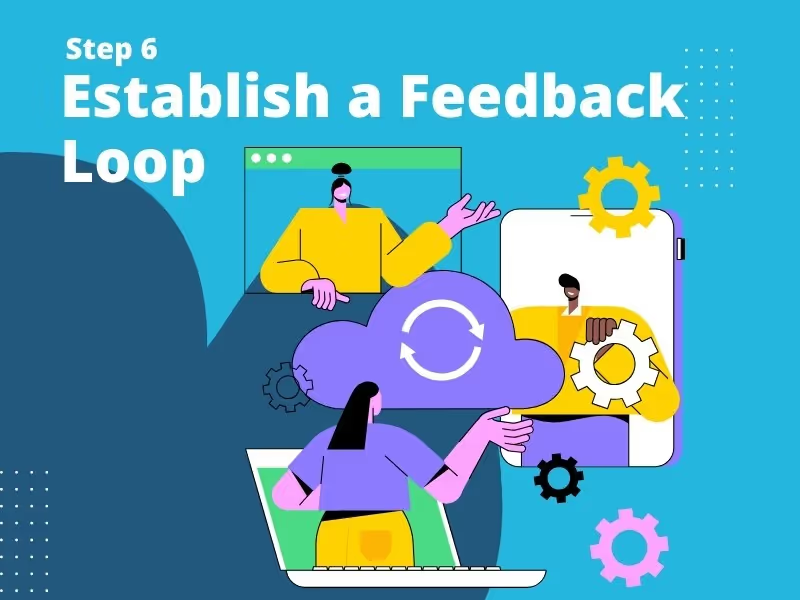
Establish a feedback loop to follow up on changes made. Continuously gauge customer feedback and assess the impact of implemented actions. Use these insights to inform ongoing decision-making and improvements.
Techniques for Capturing VOC Data
There are multiple touchpoints on a customer journey where brands can capture VOC data. This will build on your understanding of your customer and relationship with them. Different techniques can be used to maximise the responses to your questions and to gain valuable customer insights.
These include:
1. Customer Interviews
Direct one-to-one conversations that build trust and uncover detailed, personal insights. While more resource-intensive, interviews often reveal nuance that other methods miss.
2. Online Surveys
Collect structured feedback through CSAT, CES, or NPS surveys. Results depend heavily on the quality of the questions, but surveys remain one of the most scalable VoC tools.
3. Live Chat
Engage customers in real time while resolving issues. Insights can be paired with follow-up surveys, combining immediacy with structured feedback.
4. Social Media
Capture unfiltered feedback directly from brand channels, as well as indirect mentions across networks. Social platforms also allow two-way dialogue that builds stronger relationships.
5. Website Behavior
Track customer actions such as time on site, purchase history, or heat maps. Behavioral data reveals friction points and uncovers where experiences succeed or fail.
6. Recorded Call Data
Analyze customer service calls to identify recurring pain points and sentiment. Reviewing recordings later provides broader insights for training and improvement.
7. Online Customer Reviews
Feedback on third-party sites or your own product pages is highly influential for potential buyers. Reviews provide authentic insights into what customers truly value or dislike.
8. In-Person Surveys
Face-to-face surveys are simple and low cost, offering direct and open feedback. While less scalable, they deliver genuine customer perspectives.
9. Net Promoter Score (NPS)
A quick scoring system that gauges likelihood to recommend. NPS is a reliable way to benchmark loyalty and track shifts in brand perception over time.
10. Focus Groups
Small group discussions (usually 8–10 participants) that allow customers to share feedback on new features, services, or campaigns in an open dialogue.
11. Emails
Send targeted emails to specific customer segments or your entire database. They can include survey links or open-ended requests for feedback.
12. Dedicated Feedback Forms
Always-on forms that allow customers to share feedback at their convenience. When designed well, they provide ongoing streams of actionable insights.
13. Text Analytics
Use AI to analyze free-text responses across channels such as online forms, SMS, chatbots, and support tickets. This makes large-scale feedback analysis more efficient.
The most effective programs mix multiple methods to gain a 360° view of the customer.
Voice of the Customer Tools Can Help You Collect and Analyze VoC Data
Several tools can simplify the VoC process. We breakdown the top 10 best Voice of Customer tools in this report. Below are some quick options.
- Chattermill - Integrates customer feedback for a holistic view.
- SurveyMonkey - Creates surveys, forms, and polls.
- AskNicely - Collects feedback using NPS-based software.
- Typeform - Builds surveys, forms, and quizzes.
- HubSpot - Provides ready-made surveys and VoC templates.
By following these steps and utilizing these additional insights and tools, you can build a comprehensive and effective Voice of the Customer program that drives customer-centric improvements and business growth.
Case Studies – How Leading Brands Run VoC Programs
Monica Vinader
The luxury jewellery brand, Monica Vinader, put the customer at the heart of everything they do. But the team wanted a single source of truth - one place to hear and react to the voice of the customer. So the customer experience department implemented Chattermill’s Unified Customer Intelligence Platform.
“Chattermill dashboards let us gauge customer feedback across different areas of our business – CX, support, product, eCommerce, and just about anything. We use them in our cross-functional meetings to get an accurate picture of what's happening and drill down into specific themes," Jade Roberts, Head of Customer Experience.
"We had all this data in one place where anyone could see it. Suddenly, even the tiniest issues started becoming focal points for the business. Because it was so easy to self-serve and find the data, everyone just felt energized and motivated to take action."
By using Chattermill solutions, the customer experience team was able to identify and rectify underlying causes of customer churn. They monitored customer sentiment in real time and could make relevant changes in response to customer pain points. This access to a pool of actionable insights has been transformative for the company.
Limehome
Limehome is the leading technology-based provider and operator of serviced apartments in Europe. The company needed to channel the voice of the customer into every department and educate employees and partners on how to build outstanding customer experiences.
With the help of Chattermill’s interactive dashboards, workflows and alerts, Limehome's operations team could uncover critical customer issues, potential risks, and incidents with external partners. The dashboards “enable us to identify critical issues...and then build an action plan,” explains Jennifer Möller, Head of Hospitality Operations.
Analysing customer insights was also impactful for product development and customer experience teams. They understood their customers better and were motivated by seeing the positive impact of their work. And finally, the data was used to inform business strategy. The overall result of this VoC program of work was:
- 20% increase in NPS score
- 81% increase in nights booked between 2021-23.
Footasylum
By integrating survey, review, and CX data, Footasylum boosted revenue by 7% year-over-year, achieved an NPS above 80, and maintained a 4.4 Trustpilot score.
Conclusion
Creating a Voice of the Customer program is essential to compete in the modern world of corporations and enterprises. Adopting a customer-centric approach, and basing your decisions on them and their needs, will make a powerful impact. Actively listening to your customers, providing them with a feedback loop, will inform your decision-making. Implementing a Voice of the Customer program to collect, analyse and report your VOC data will empower your business to adopt a customer-centric approach and make informed decisions.
Voice of the Customer (VoC) Program: FAQs
1. What is a Voice of the Customer (VoC) program?
A Voice of the Customer (VoC) program is a structured approach to capturing, analyzing, and acting on customer feedback to better understand their needs and improve experiences.
2. Why are VoC programs important?
VoC programs help businesses align strategies with customer expectations. They provide insights into satisfaction, uncover pain points, and guide decisions that build loyalty and retention.
3. What are the key components of a VoC program?
The main components include feedback collection, data analysis, insight sharing across teams, and closing the loop by acting on customer input.
4. How is VoC data collected in a program?
VoC data can be collected through surveys, reviews, interviews, focus groups, social media monitoring, and customer support interactions.
5. How do companies analyze VoC data?
Companies use methods such as sentiment analysis, text analysis, and categorization to detect trends and themes in customer feedback. Increasingly, AI is used to process unstructured data at scale.
6. How does a VoC program improve customer experience?
By highlighting what customers value and where issues occur, a VoC program allows businesses to make improvements that reduce friction, personalize experiences, and build stronger relationships.
7. What challenges do companies face when running VoC programs?
Common challenges include collecting consistent feedback, managing large amounts of data, and ensuring insights lead to meaningful action across the organization.
8. How can businesses ensure their VoC program is effective?
To be effective, businesses should act on feedback, close the loop by communicating changes to customers, and continually refine the program to meet evolving expectations.


